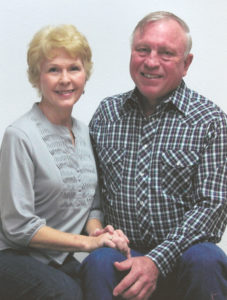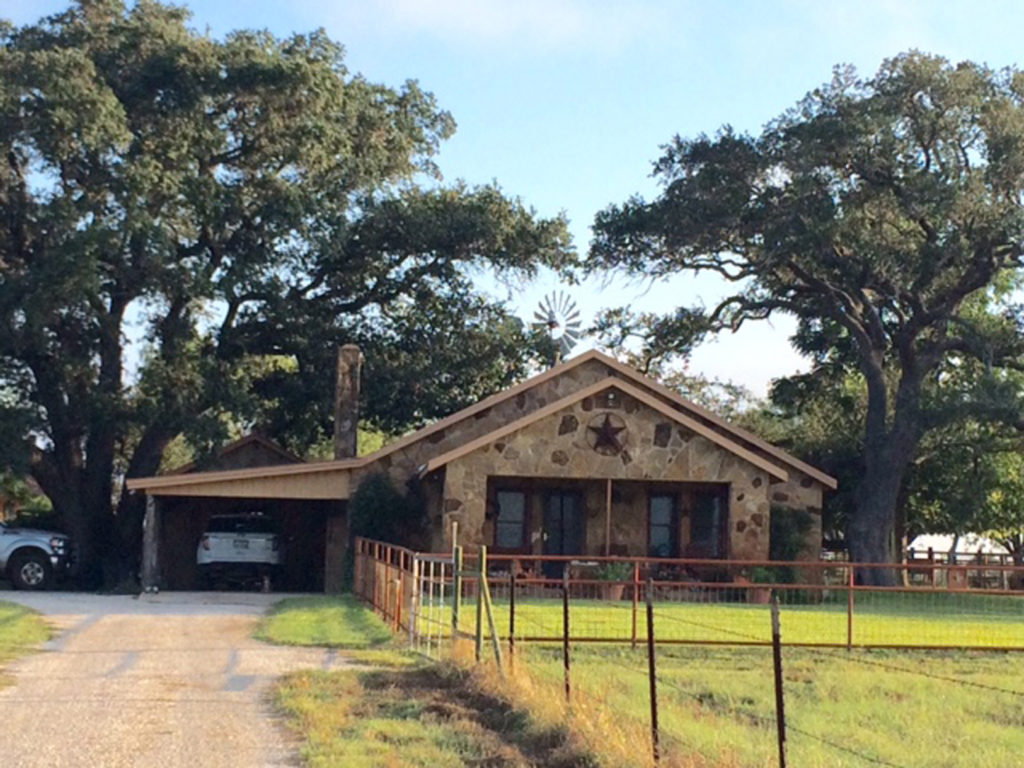


Johann Jacob I. Bendele (son of Franz Joseph Bendele, b 1775, and Cathrine Riedinger, ca. 1776) was born in 1800 in the village of Ste.-Croix-en-Plaine, or Heiligkreuz, in Alsace, ten miles from the west bank of the Rhine. Jacob I. (Jean Jacques in French) and his wife, Kathrenia, along with some dozen other families, joined the Castro Colony in Texas in 1846. Jacob I. and his wife came with two daughters, Mary and Andreas, and one of their sons, Jacob II, who was 17 at the time. Another son, Joseph Bendele came later.
As a Castro Colonist and head of a family, Jacob I. received a land patent from the State of Texas for 640 acres, and he settled north of the railroad on FM 1343 near the Francisco Perez Creek. He became a citizen in 1852, and thus the children who migrated with him also received citizenship. Joseph, because he came later, earned his citizenship in 1858. When Jacob I. died in 1872, he was survived by his wife and children, their spouses, and 21 grandchildren living in or near the Castroville area. (The History of Medina County, Texas, Vol I.)
One son of Jacob I, Jacob II, (1829-1910) married Sybilla Haass (1836-1912).
One son of Jacob II, Henry George Bendele (1868-1953), married Louisa Folk (1876-1927). Louisa’s father was Frederick W. Folk – originally Volk but “Americanized” to Folk – and his father, Frederick Folk, had come to America from Baden, Germany.
One of six children born to Henry George and Louisa is Henry Otto Bendele (1915-1999). Henry Otto married Henrietta Keller, daughter of Paul and Frieda Poerner Keller. Paul’s grandfather, Seraphin Keller, was among the original Castro Colonists, and his son, also Seraphin, relocated in 1883 to an area about five miles northwest of Devine off what is today Hwy 173. (Seraphin was the only one of eleven children to leave Castroville.) Seraphin purchased approximately 2000 acres, and when he left it to his seven children, Paul Keller got the home place, known as “The Old Keller Place.” This is the home where Henrietta Keller (1916-2009) was raised. Henry Otto and Henrietta are the parents of Devine’s Bob Bendele.
Henry Otto and Henrietta, choosing not to farm on land where he was raised located on 1343, purchased 400 acres bordering both sides of the Black Creek from the Keller estate and began farming. However, after several difficult years, including devastating droughts and hail, Henry Otto began working in Devine for Graham Tin and Plumbing. Later, the couple purchased Devine Hydro Gas, located downtown on the corner where Pico’s stands today, and Henry delivered butane to customers throughout Medina County, while Henrietta handled the bookkeeping side of the business. Bob says this move took place when he was a boy, and he spent his high school years helping deliver propane all over the county. In 1975, the company was sold, and Henry O. and Henrietta returned to ranching and farming full time.
Henry Otto played a major role in the Devine school system. He served on the DHS School Board for 17 years. He was responsible in part for consolidating the Devine area rural schools of Shook, Biry, Black Creek, and Big Foot. He was instrumental in building the new high school – what is now the Intermediate School – as well as today’s Early Elementary School. And he is the first ever of three generations of Warhorses to graduate from Devine High School: Henry Otto, 1933; Bob, 1964; Bryan and Travis, 1991 & ’93. Of course, although not Warhorses, one can’t overlook other DHS family graduates: Bob’s daughter, Christie (1997), and before that, Bob’s mother, Henrietta (1934). And, although not a Devine graduate, Bob’s wife, Joyce, retired from teaching 19 years at DHS in 2005.
Henry O. and Henrietta had four children: Janet Louise, retired as a bookkeeper from Northside ISD; Robert “Bob” Henry, retired educator, and Devine’s former DHS Principal; Marvin James, a semi-retired CPA living in Austin; and Paulette “Ann,” who worked for oil companies and now lives at Canyon Lake and is a realtor.
Bob and Joyce (Peacock) married in 1967. In 1982 they moved to Devine and purchased from the estate the rock house where they live today. It was built in 1946 on the land purchased by his Keller grandparents when they decided to move from the Black Creek which was far from improved roads. The land became available when Highway 173 was completed in the late 1940s. Interestingly, the explanation for the northwest/southeast layout of the highway is that the citizens of the county were assured that a highway would be designed to run directly from Devine to the county seat, some 20 miles northwest of Devine. Prior to the highway’s construction, managing to travel to Hondo took an entire day along winding ranch and county roads. Also, Hwy 173 stopped at Hwy 90. Bob explains that to get to Bandera from Hondo, people had to travel north toward Tarpley in and through ranches. A remnant of the Old Hondo Road still remains and is so-marked just south of Bandera. That route was one Bob recalls the family had to take to reach the Folk place, whose farm land lay at the beginning of the hill country going to Bandera.
The “Francisco Place” –ultimately so dubbed to differentiate it from the Original Keller Place – has unique historical significance. Built in 1946, the rock was harvested from the back of the place near the creek. Some rocks harvested from a cliff were so enormous they were split to create interesting, mirror designs. Other large stones were used as pathways. Also, “Heritage” petunias grow in abundance along the front and side of the house, petunias that the women of the original Castro settlers brought over from Alsace and were transferred from home to home as families grew and moved. When Bob and Joyce first moved into the rock home, they uncovered debris that had buried the seeds, and after being cleaned up, lo and behold, the petunias sprouted! They stand proudly as a glorious tribute to the heritage of the women who first nourished them over 150 years ago!
In 1983, the Bendele/Keller homestead (original Keller Place) was recognized by the State of Texas for its 100 years of continual family ownership/usage. The land is still owned and operated by the decedents of Henry and Henrietta. Another interesting note is that the Upper Presidio Road crosses this land. It is the road that Santa Anna’s forces used as they traveled to the Battle of the Alamo in 1836. (History of Medina County, Texas, Vol II.)
Another key historical point of interest is the renown Keller Park (at the lower parameter of the “Francisco Place”), which, for many years, was the destination of local folks as well as hundreds from other parts of Texas for the annual Fourth of July celebration. This interesting story will be featured in our next edition as the Bendele/Keller story continues.